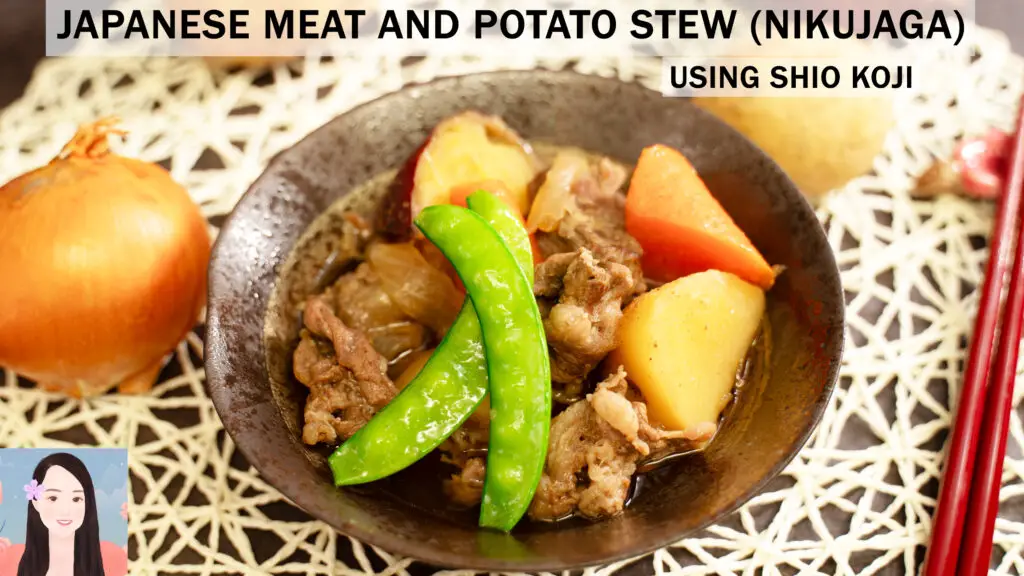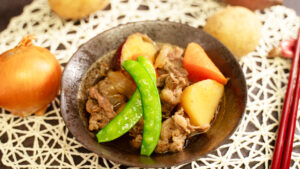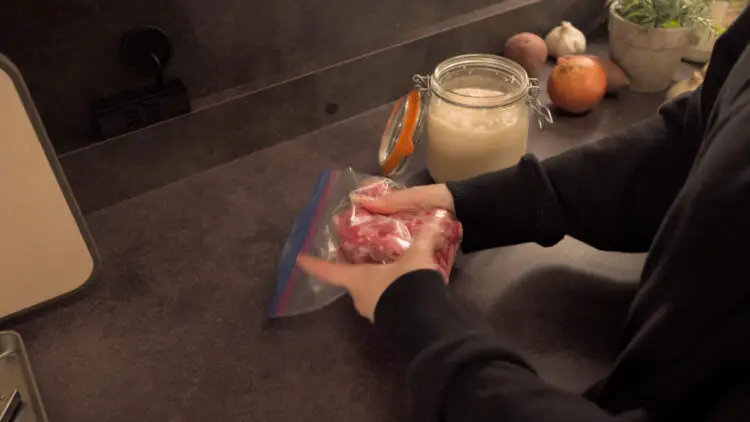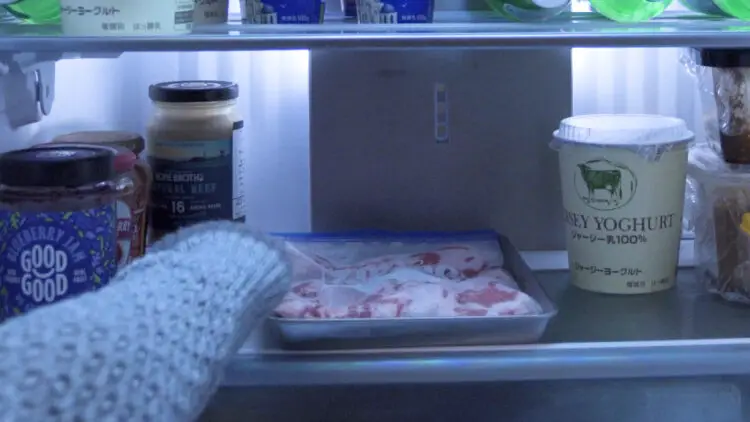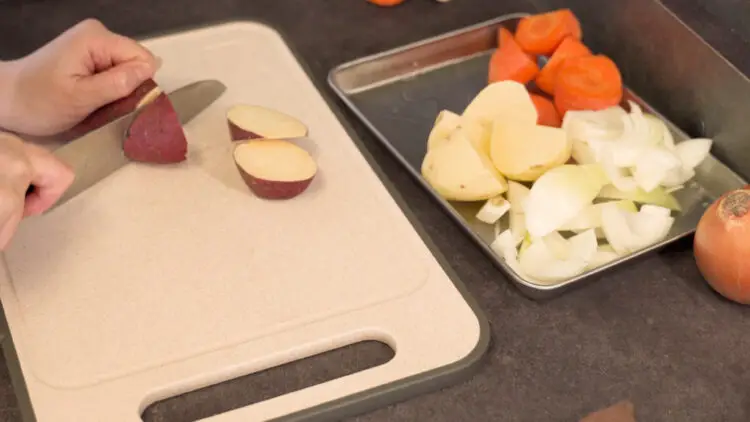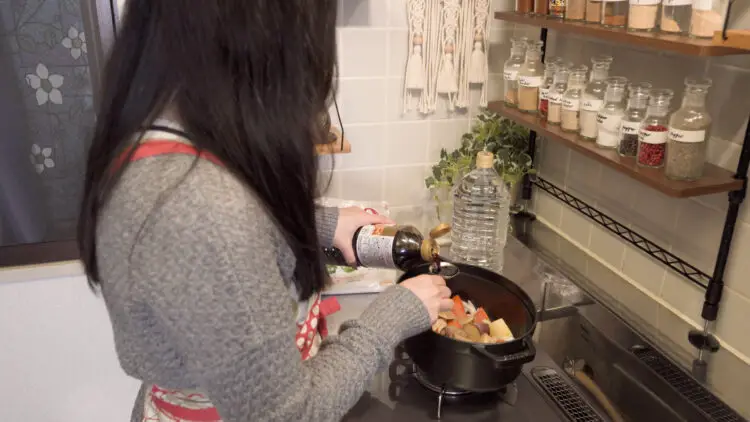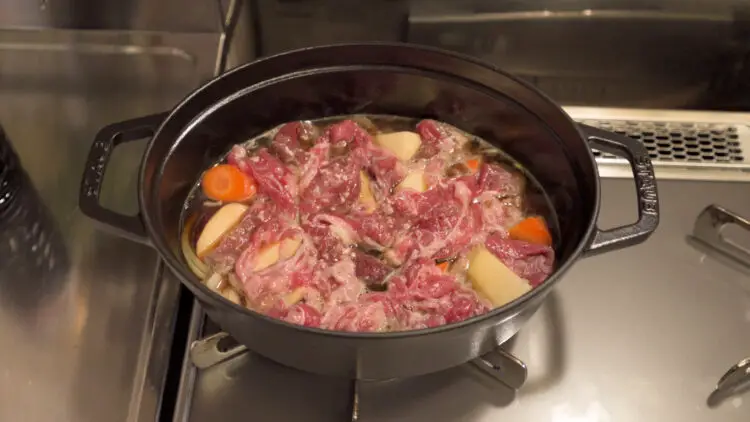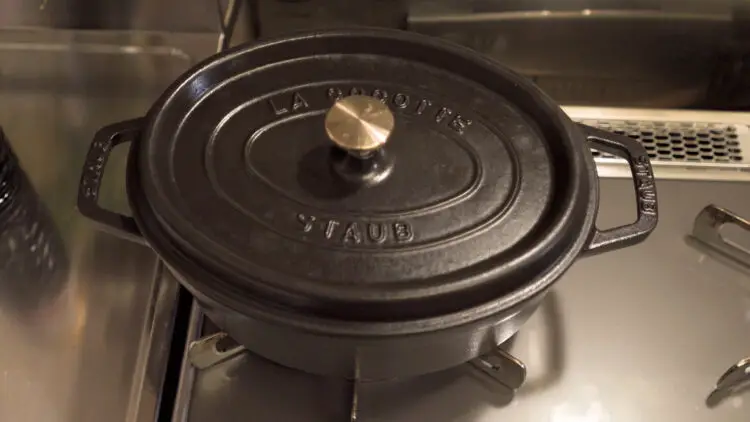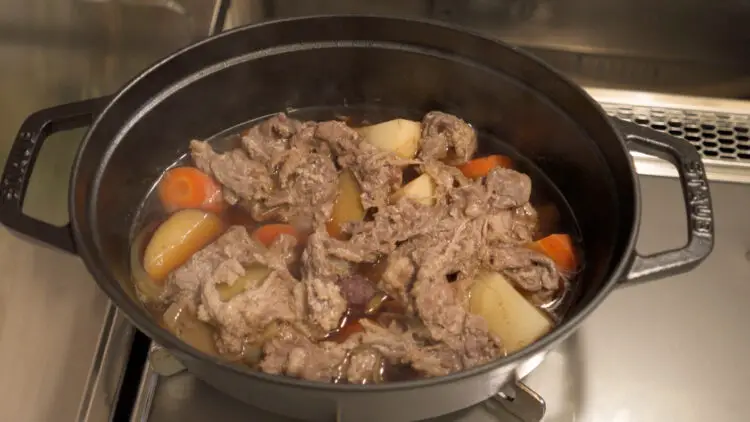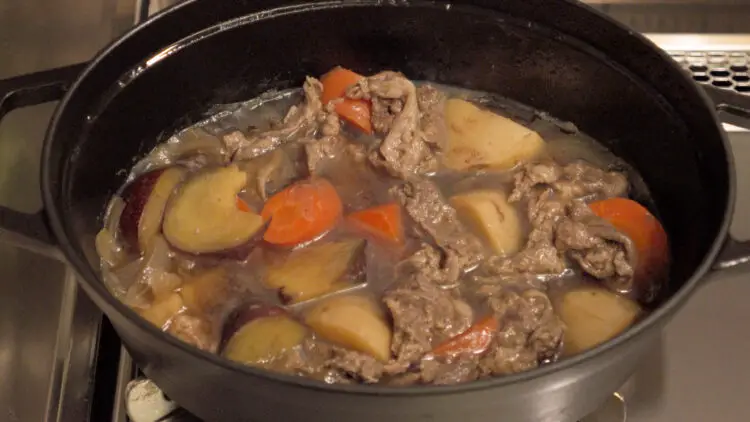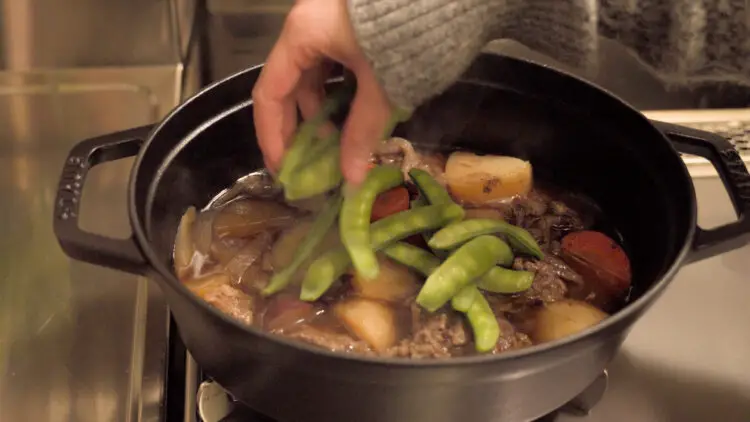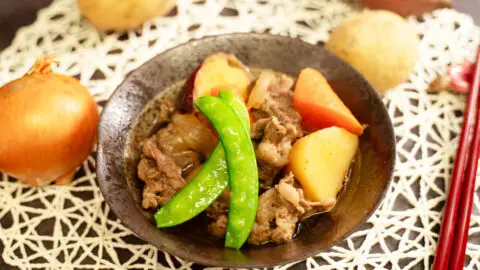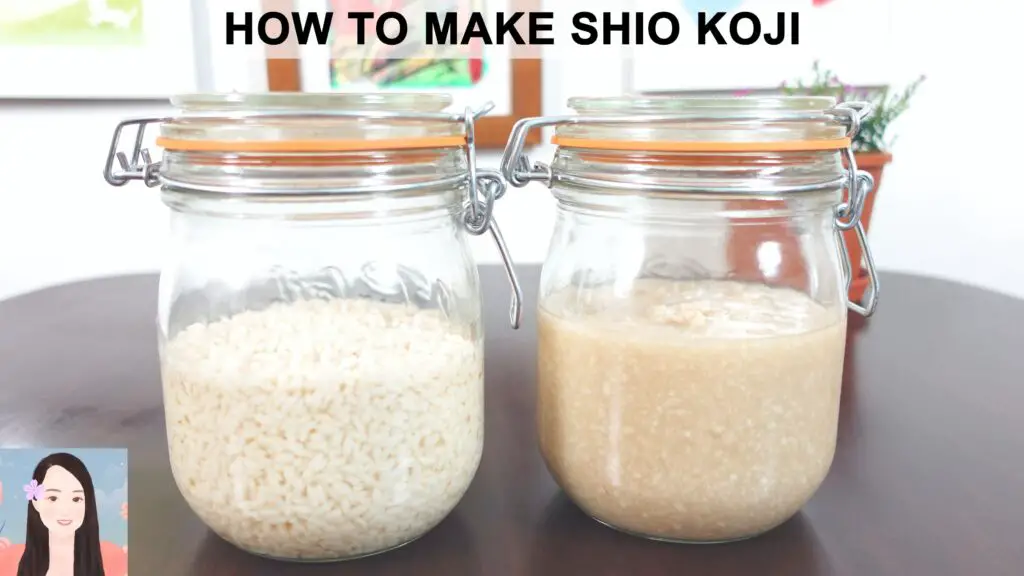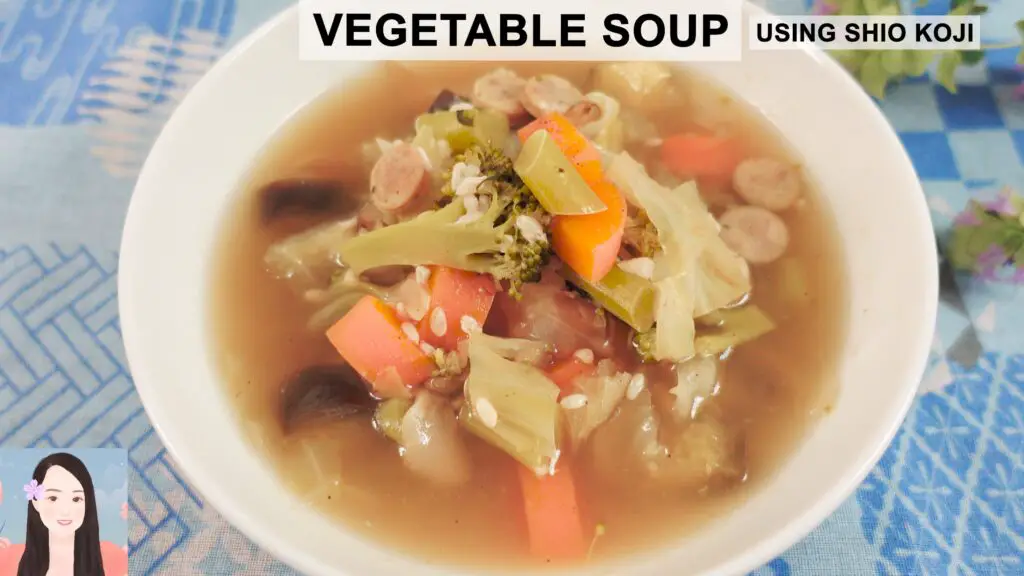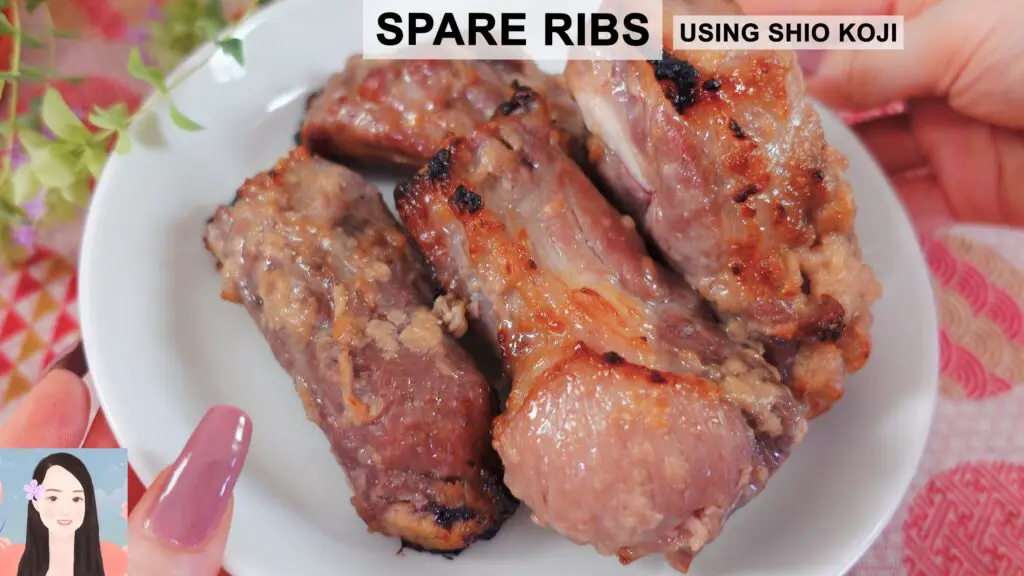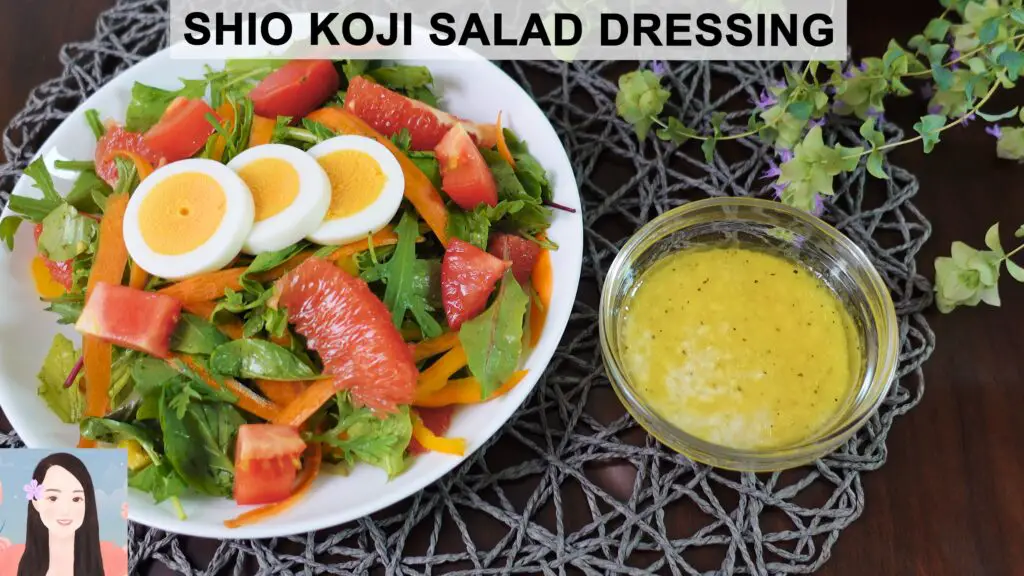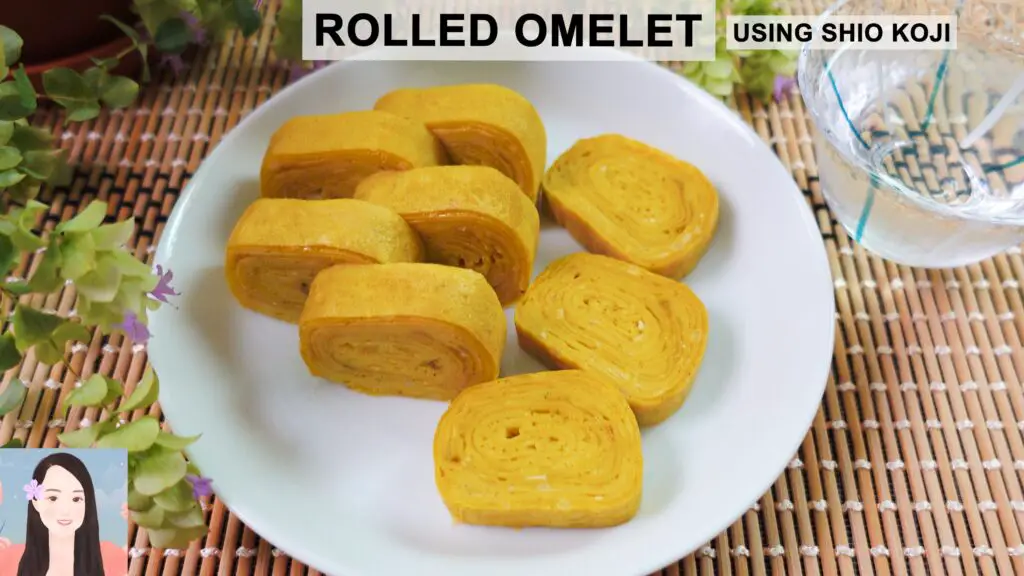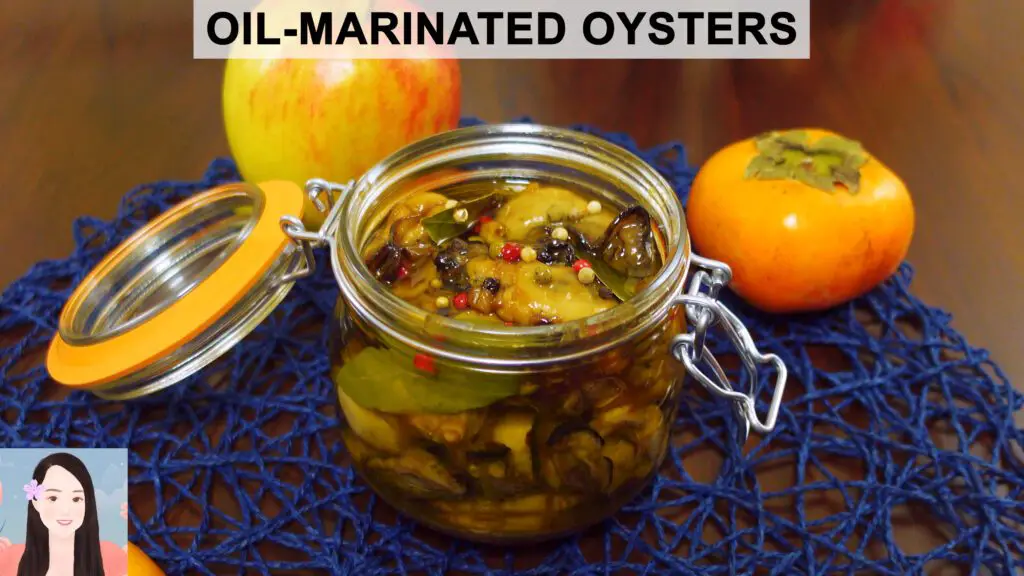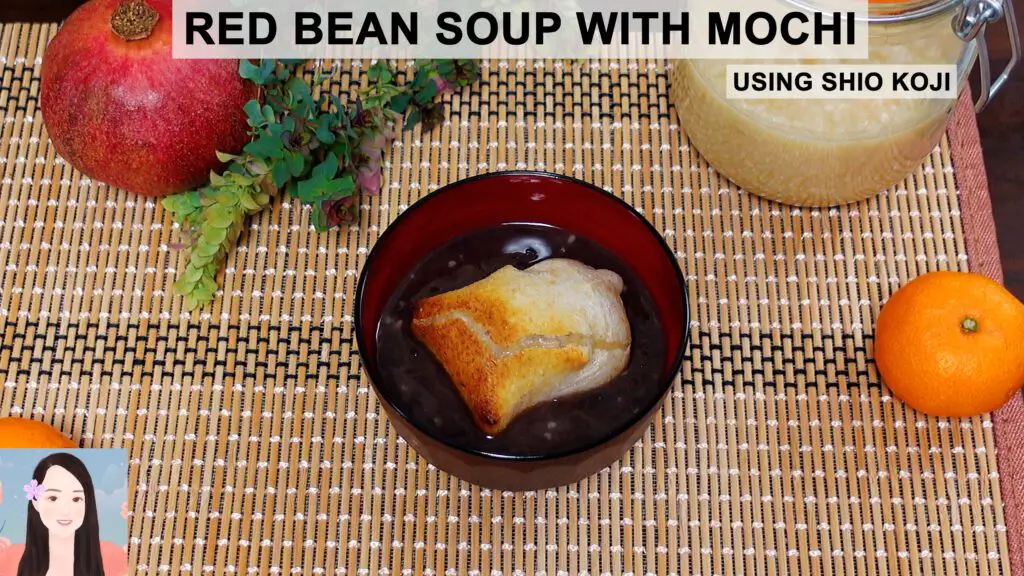Japanese meat and potato stew (“nikujaga” (肉じゃが) in Japanese) is one of my ultimate comfort foods. There is something about that gentle sweetness and softness of the potatoes and the meat in this dish that relaxes me and calms me down as if somebody is wrapping me around with a blanket and telling me that everything is okay.
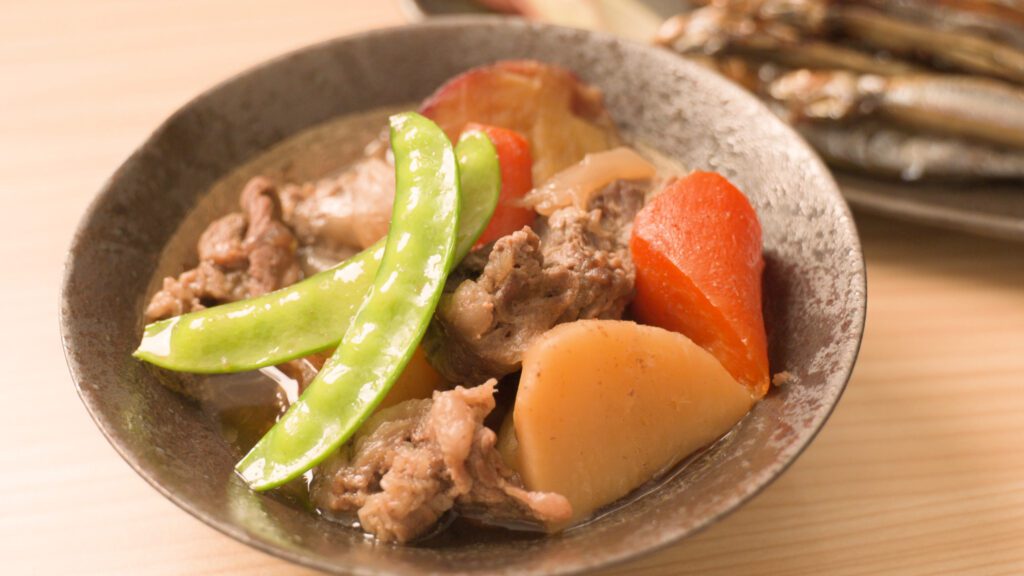
There are two important goals in this recipe: (i) the meat should come out soft after cooking, which we will achieve by marinating the meat in shio koji for a long time (preferably 24 hours); and (ii) the veggies (especially the potatoes) have thoroughly absorbed the soup, which we will achieve by cooling down the nikujaga once it’s cooked. I’ll explain these in more detail in the recipe below.
As for the meat, I recommend using slices of beef or pork with nice marbles of fat. The fattier the meat is, the softer and more flavorful it will be. Fattier meat is healthier for us too. For this reason, I prefer shoulder loin or belly of the animal.
Shio koji is a fermented mixture of rice koji, salt, and water. Shio koji contains enzymes called “proteases” which are created by koji mold. Proteases break down proteins into amino acids. This reaction severs the fibers in the meat and makes it softer. Also, amino acids created by this reaction increase umami (savoriness). Plus, the salt in shio koji will give an undertone of saltiness to the meat.
Because shio koji will tenderize the meat during marinating, you don’t need to use expensive, super-fatty meat for this recipe. In fact, I have used expensive wagyu beef (very fatty) one time, and unfortunately most of it melted away during cooking because shio koji overworked on the meat. So I recommend using normal-grade meat from the supermarket etc.
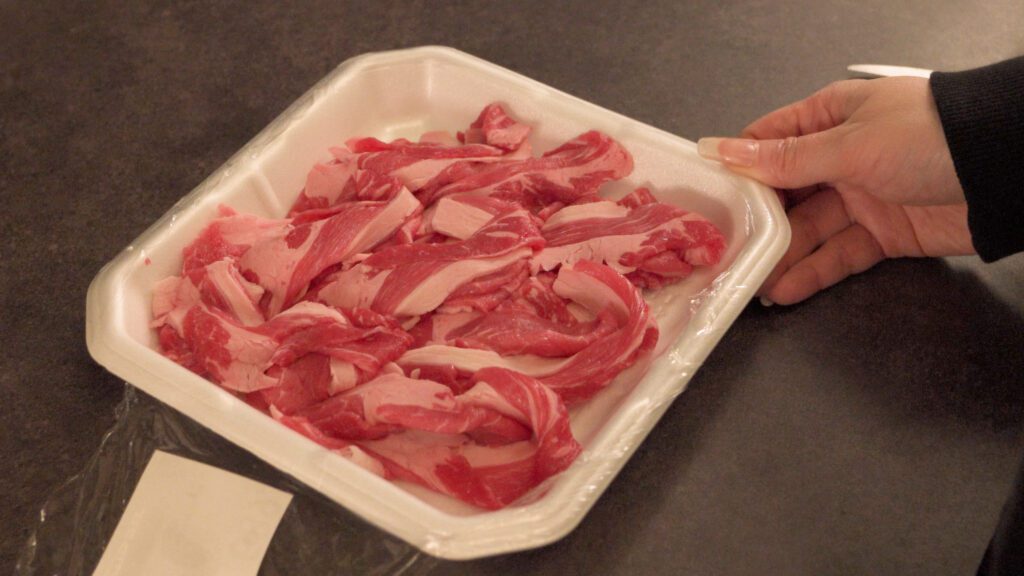
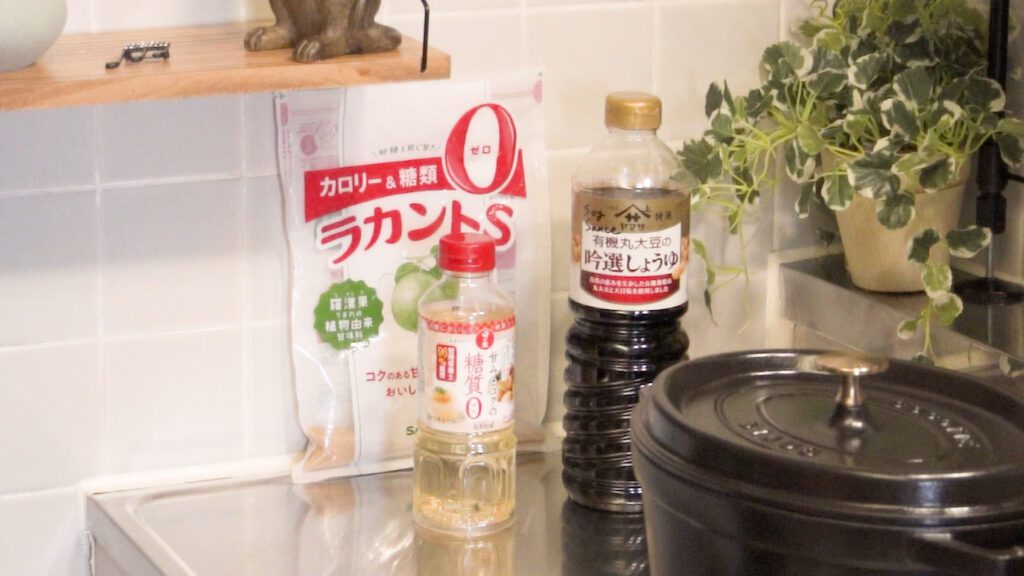
Japanese Meat and Potato Stew (Nikujaga) Using Shio Koji
Ingredients
For Marinating
- 230 g (1.7 cups) beef or pork slices (preferably with marbles of fat)
- 1 tsp (1 tsp) shio koji
For Cooking
- 150 g (5.3 oz) potatoes (Use any potatoes of your choice. I like to mix regular potato and sweet potato.)
- 70 g (2.5 oz) carrot
- 150 g (5.3 oz) onion
- 1 tbsp (1 tbsp) dashi powder
- 2.5 tbsp (2.5 tbsp) soy sauce
- 3 tbsp (3 tbsp) mirin
- 2 tbsp (2 tbsp) sugar
- 250 ml (1.1 cups) water (Or until 80% of the veggies are covered with water in the pot.)
Topping
- field peas, green peas, spring onion, etc. (Optional. Anything vibrant green and crunchy would be nice.)
directions
Marinating the Meat in Shio Koji
- Add meat and shio koji in a sealable bag, and rub shio koji into the meat.
- Let the meat rest in the fridge for at least an hour, preferably for 24 hours, during which shio koji will do its magic on the meat to make it softer and more delicious. The longer the better.This step prevents the meat from getting hard and rubbery during cooking, achieving soft and juicy meat.
Cooking the Stew
- Chop onion, carrot, and potatoes into bite size pieces.
- Add all veggies into a pot.And then add dashi powder, soy sauce, mirin, and sugar.
- Add the shio-koji-marinated meat slices on top and spread them out.Turn on the heat to medium.
- Once it starts boiling, cover and lower the heat to low.Let it cook for 25 mins, just until the veggies are cooked through, but not longer.
- After 25 mins, the nikujaga will look like this. It's technically OK to eat it now, but to make it a million times better, do the resting step below.
Resting (Cooling the Stew)
- This is where the magic happens. Let it rest for a few hours until it cools.This way, the veggies and the meat will slowly absorb the soup. Vegetables are like sponges. They absorb the liquid around them as they cool, but not so much as they are being cooked, so this resting step makes a big difference.
Recipe Notes
- Feel free to adjust the ingredient amount to your taste.
- What Is Shio Koji? (The Complete Guide)
- How to Make Shio Koji (Recipe)
- Shio koji products:
– If You Are Outside of Japan Shio koji by marukome 200g (7.05 ounce): https://geni.us/8vWX0vj Shio koji by marukome 500g (17.6 ounce): https://geni.us/tIoxH2b– If You Are in Japan Shio koji by marukome 500g (17.6 ounce) x 2: https://geni.us/Kbbw0C
- Dashi powder:
– If You Are Outside of Japan: https://geni.us/LD7XA– If You Are in Japan: https://geni.us/AI3BtbThese dashi powder products are not exactly the same as the one I used in the video but are similar.
- As an Amazon Associate, I earn a percentage of what you pay on qualifying purchases.
Nutrition
Tokyo-based Japanese food enthusiast, sharing easy, low-carb recipes featuring Japanese staples like shio koji. I also explore the city’s dining scene through honest restaurant reviews and food adventures. Learn more at sakurayubi.com/about/

